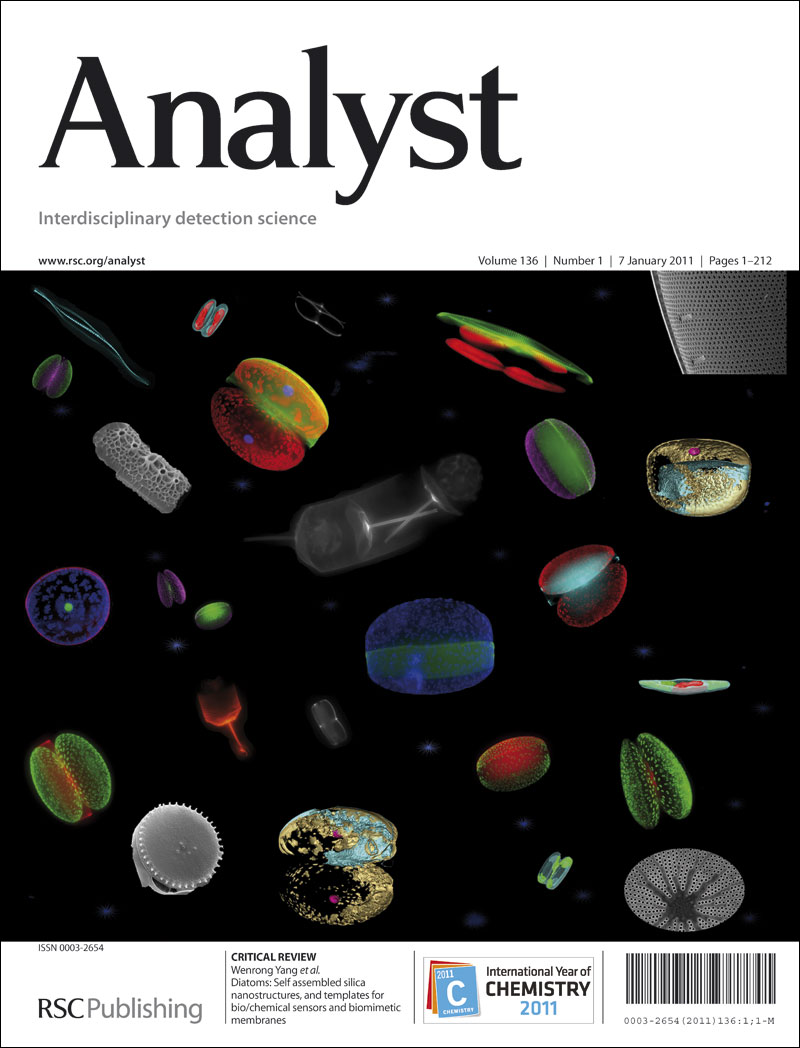Target-induced recycling and self-folding hairpin primer-mediated LAMP activation of CRISPR/Cas12a for highly sensitive aptamer-based therapeutic antibody assay
IF 3.6
3区 化学
Q2 CHEMISTRY, ANALYTICAL
引用次数: 0
Abstract
Owing to the high affinity and specificity for antigen target molecules, therapeutic monoclonal antibodies (mAbs) have been increasingly used for the treatment of different diseases. And, the sensitive and accurate detection of mAbs is crucial for the evaluation of their efficacy and safety. With the new design of a thiophosphate-modified and self-folding hairpin primer, we describe here the establishment of an aptamer-based, highly sensitive and simple fluorescent trastuzumab mAb assay method via target-induced recycling and low temperature LAMP activation of CRISPR/Cas12a signal amplifications. Target trastuzumab molecules bind and change the conformation of the hairpin aptamer probes to trigger Bst polymerase-mediated recycling and LAMP reactions with the assistance of hairpin primers to form long dsDNAs containing many protospacer-adjacent motif (PAM) segements. Cas12a/crRNA subsequently associate with these PAMs to exhibit trans-cleavage property to cyclically cut ssDNA reporter molecules to yield considerably magnified fluorescence recovery for trastuzumab detection. Owing to target-recycling, LAMP and Cas12a/crRNA-integrated signal amplifications, low picomolar detection limit (4.17 pM) for trastuzumab is achieved. And, such assay can be applied to trace trastuzumab assay in diluted human serums. Having the distinct advantages of low temperature LAMP with minimal primer involvement, as well as the integration of amplification cascade, such sensing methodology can be employed as robust signal enhancement methodology for detecting various molecular biomarkers for diverse biomedical and biological applications.靶向诱导循环和自折叠发夹引物介导的LAMP激活CRISPR/Cas12a用于高敏感适配体治疗性抗体检测
由于对抗原靶分子的高亲和力和特异性,治疗性单克隆抗体(mAbs)越来越多地用于不同疾病的治疗。对单克隆抗体进行灵敏、准确的检测是评价其有效性和安全性的关键。利用硫代磷酸盐修饰的自折叠发夹引物的新设计,我们在这里描述了通过靶向诱导循环和低温LAMP激活CRISPR/Cas12a信号扩增,建立一种基于适配体的、高灵敏度和简单的曲妥珠单抗荧光检测方法。目标曲妥珠单抗分子结合并改变发夹适体探针的构象,在发夹引物的帮助下触发Bst聚合酶介导的再循环和LAMP反应,形成含有许多原间隔邻近基序(protospacer-邻基序,PAM)片段的长dsDNAs。随后,Cas12a/crRNA与这些pam结合,表现出反式切割特性,循环切割ssDNA报告分子,为曲妥珠单抗检测产生显着放大的荧光恢复。由于靶向回收、LAMP和Cas12a/ crrna集成信号放大,实现了曲妥珠单抗的低皮摩尔检测限(4.17 pM)。该方法可应用于稀释后的人血清中的痕量曲妥珠单抗测定。该传感方法具有低温LAMP和最小引物参与的独特优势,以及扩增级联的集成,可以作为鲁棒信号增强方法用于检测各种生物医学和生物学应用中的各种分子生物标志物。
本文章由计算机程序翻译,如有差异,请以英文原文为准。
求助全文
约1分钟内获得全文
求助全文
来源期刊

Analyst
化学-分析化学
CiteScore
7.80
自引率
4.80%
发文量
636
审稿时长
1.9 months
期刊介绍:
"Analyst" journal is the home of premier fundamental discoveries, inventions and applications in the analytical and bioanalytical sciences.
 求助内容:
求助内容: 应助结果提醒方式:
应助结果提醒方式:


